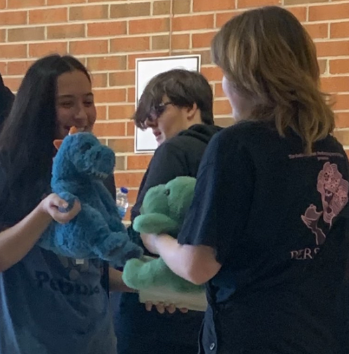Television has become one of the most common American pastimes. Whether this means watching an episode of your favorite TV show or finding a new show to watch over the weekend, most people would agree that television is a strong part of their lives. Despite the variety of shows available, the casts tend to be similar. They lack diversity, especially characters who are members of the LGBTQ+ community. It is important for us to increase television representation to educate audiences and give representation to minority groups.
When watching television, the odds of seeing an LGBTQ+ character are low. If one is represented, they are often a side character, a non-recurrent role, or a stereotype of the community. For example, one of the most common stereotypes is that of a white gay man. It shows no racial diversity, gender diversity, or diversity of sexuality. A white gay man has come to symbolize the entire LGBTQ+ community when that is only one of many ways to identify. Some notable LGBTQ+ characters are Kurt Hummel from Glee and Simon Spier from the movie Love, Simon. Both of these characters are white gay men. The TV show Will & Grace also features two white gay male characters: Will Truman and Jack McFarland. When it comes to the gender portion of the LGBTQ+ community the representation is even more limited. As of 2015, research showed that only three transgender characters could be found on cable programming and none were found during prime-time hours.
In addition to common stereotypes of the LGBTQ+ community, there is also an issue of inaccurate and demeaning portrayal of characters within the LGBTQ+ community. A prime example of this is the hyper-sexualization of lesbian women. Often, when a lesbian couple is portrayed on screen, it is for the benefit of the male gaze. Lesbian couples are used as entertainment for men, with shows often portraying women as objects, rather than people. As explained by Harley C. in a Huffington Post article, “…the media continues to treat romantic feminine relationships as synonymous with sexuality and sex, which leads members of society to view these relationships as some sort of taboo.” Programing like this does more damage than good. The negative portrayal of minority groups further enforces stereotypes and does not aid in representation.
When advocating for more LGBTQ+ representation, some parents raise many concerns, as they do not want their children exposed to images of the queer community. These beliefs are often based on misconceptions and lack of exposure to the community, as well as stereotypes. Expanding media representations of the queer community can break misconceptions and stereotypes by educating children and families about LGBTQ+ individuals. Showing queer characters living the same lives that cisgender and straight people live, helps normalize their identity. Showing diverse casts will also teach children to respect and care for people different from themselves.Despite the limited representation, there are shows taking strides to close this gap of visibility. The Fosters feature an interracial lesbian couple raising typical teenagers. This show was nominated multiple years for various categories at the Teen Choice Awards. Laverne Cox, a transgender actress, has a career that has soared in recent years. She was the first openly transgender actress to be nominated for an Emmy for her performance as a transgender woman in the popular show Orange Is the New Black. In addition, Modern Family, a show featuring a gay couple and their family, ran for an impressive eleven seasons and won multiple Emmys, Screen Actor’s Guild Awards, and one Golden Globe award. Though these shows have been successful, they are still in the minority of programming. Hopefully, in the future, more shows will feature LGBTQ+ characters on a wider spectrum.






